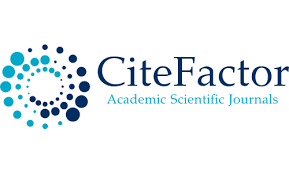| The fate of mitral homograft valve prosthesis implanted in tricuspid position | |
| DOI: 10.5606/e-cvsi.2024.1738 | |
| Mahsati Akhundova1, Osman Nuri Tuncer2, Serkan Ertugay2, Yüksel Atay2, Anıl Ziya Apaydın2 | |
|
1Department of Cardiovascular Surgery, İzmir Tınaztepe University Private Buca Hospital, İzmir, Türkiye 2Department of Cardiovascular Surgery, Ege University Faculty of Medicine, İzmir, Türkiye |
|
| Keywords: Cardiac valve prothesis, homografts, tricuspid valve | |
Tricuspid valve surgery is performed less frequently than other heart valve surgeries, and displacement constitutes a very limited portion
of these surgeries. Valve selection during the replacement remains controversial. Although bioprosthetic valves are currently the most
preferred prostheses, mitral homografts, which are biological materials with proven long-term durability, have also been used for this
surgery. Herein, a 35-year-old male patient who underwent tricuspid valve replacement using a mitral homograft with a durability of
18 years was presented. This case highlights the first mitral homograft produced using the country's own resources and implanted in
the tricuspid position. |
|
Surgery for the tricuspid valve (TV) is performed
less commonly than for other heart valves. When
an operation is required, annuloplasty is usually
sufficient in most cases. Therefore, replacements are
infrequent. The selection of valve prosthesis for the TV position remains controversial. The need for lifelong anticoagulant therapy and the difficulty of permanent pacemaker implantation are the limitations of mechanical valves. The risk of degeneration is the only concern associated with the use of bioprosthetic prostheses. Therefore the bioprosthetic valves are the most common preferred prostheses for TV replacement (TVR).[1] Homograft is another alternative biological solution owing to its long-term durability; however, its availability is a major limitation. Herein, we presented a patient who underwent TVR with a mitral homograft. Additionally, this case is worth presenting, as it marks the first mitral homograft successfully implanted in the TV position produced from the country's own resources. |
|
|
CASE PRESANTATION
|
|
A 35-year-old male with symptoms of
right-sided heart failure was referred to our clinic. Echocardiography revealed severe
tricuspid regurgitation secondary to rheumatic
degeneration. The decision to implant a homograft
was made because the patient was too young
for life-long anticoagulant therapy. Homograft
cryopreservation and storage were performed at
our institutional homograft bank. It was 33 mm
in diameter (measured by a bioprosthetic mitral
valve sizer). Tricuspid valve replacement with a
mitral homograft was performed using the Doty
technique.[2] Additionally, a 33-mm tricuspid ring
(Carpentier-Edwards Inc., Irvine, CA, USA) was
implanted for annular stabilization. Intraoperative
transesophageal echocardiography showed good
function of homograft leaf lets without any
regurgitation. The postoperative course was
uneventful. The same patient was readmitted at 54 years of age with similar symptoms prior to the index operation. Transthoracic echocardiography revealed a heavily calcified homograft in tricuspid position. Severe tricuspid stenosis was detected (maximum transvalvular gradient: 20 mmHg), and the leaflets were immobile. The tricuspid ring was partially detached from the annulus. Right atriotomy was performed after aorto-bicaval cannulation. The leaflets of the mitral homograft were heavily calcified. The homograft was dislocated anteriorly from the surrounding ring (Figure 1). The ring was explanted, and the remaining calcifications, which extended to the papillary muscles, were removed after removal of the homograft tissue. A 29-mm bioprosthetic valve (Pericarbon; Sorin Biomedica Cardio, Spa Saluggia, Italy) was implanted using 2-0 pledgetted sutures. Postoperative transesophageal echocardiography showed a maximum gradient of 3 mmHg and no regurgitation. The patient was discharged on the seventh postoperative day after an uneventful postoperative period. The patient remained in sinus rhythm. A written informed consent was obtained from the patient. |
|
Mitral homograft implantation in the tricuspid
position was first performed by Pomar et al.[3] They
reported satisfactory results of TVR in three patients
with right-sided endocarditis. In the following years,
similar reports showed that a mitral homograft can be
an alternative biological solution for TVR in cases of
infective endocarditis or degenerated prothesis.[4] Mitral homograft implantation in the tricuspid position is preferred, particularly in pediatric patients, due to its growth potential, low thrombogenicity, and resistance to infection. Nozar et al.[5] reported satisfactory results, although the surgery was challenging in two pediatric cases. To date, no significant difference in survival and thrombosis between mitral homografts and other bioprosthetic valves has been observed. A recent study analyzing outcomes in patients under 20 years of age showed better durability, particularly after 10 years.[6] In our case, the mitral homograft showed a durability of 18 years. Correct positioning of the leaf lets and subvalvular aparatus of the homograft and avoidance of damage to the conduction system are crucial. Beyond the difficulty of surgical techniques, the most important issue is the limited availability of homograft valves of the desired size and time. Homografts are cost-effective and feasible when the institute has its own bank. The first homograft application in Türkiye was performed at our institution. After the establishment of the country’s first tissue bank in 1994, 371 homografts were cryopreserved for 24 years, and only eight of these were mitral homografts.[7] Three mitral homografts were sent to different centers in Türkiye after the presented case. In conclusion, homografts have not gained widespread use due to procurement issues. Homografts appear to have high biological and clinical benefits owing to their lower thrombogenicity and higher resistance to infection than mechanical or biological prostheses. There are no solid recommendations for their use due to the lack of studies including larger number of patients and long-term follow-up. This case report offers insight into their long-term outcomes. Data Sharing Statement: The data that support the findings of this study are available from the corresponding author upon reasonable request. Author Contributions: Idea/concept, analysis and/or interpretation, literature review: M.A., O.N.T.; Design, writing the article: O.N.T., A.Z.A.; Control/supervision, critical review: A.Z.A., Y.A.; Data collection and/or processing: S.E., M.A.; References and fundings: S.E. Conflict of Interest: The authors declared no conflicts of interest with respect to the authorship and/or publication of this article. Funding: The authors received no financial support for the research and/or authorship of this article. |
|
1) Cheng Z, Fang T, Wang D, Guo Y. Tricuspid valve
replacement: Mechanical or biological prostheses? A
systematic review and meta-analysis. Heart Surg Forum
2021;24:E209-14. doi: 10.1532/hsf.3531.
2) Doty JR, Doty DB. Tricuspid valve replacement. Oper Tech
Thorac Cardiovasc Surg 2003;8:193-200.
3) Pomar JL, Mestres CA, Pare JC, Miro JM. Management of
persistent tricuspid endocarditis with transplantation of
cryopreserved mitral homografts. J Thorac Cardiovasc Surg
1994;107:1460-3.
4) Mestres CA, Miro JM, Pare JC, Pomar JL. Six-year
experience with cryopreserved mitral homografts in the
treatment of tricuspid valve endocarditis in HIV-infected
drug addicts. J Heart Valve Dis 1999;8:575-7.
5) Nozar JV, Anzibar R, Picarelli D, Tambasco J, Leone
RW. Mitral homograft replacement of tricuspid valve in
children. J Thorac Cardiovasc Surg 2000;120:822-3. doi:
10.1067/mtc.2000.108694.
|
|














